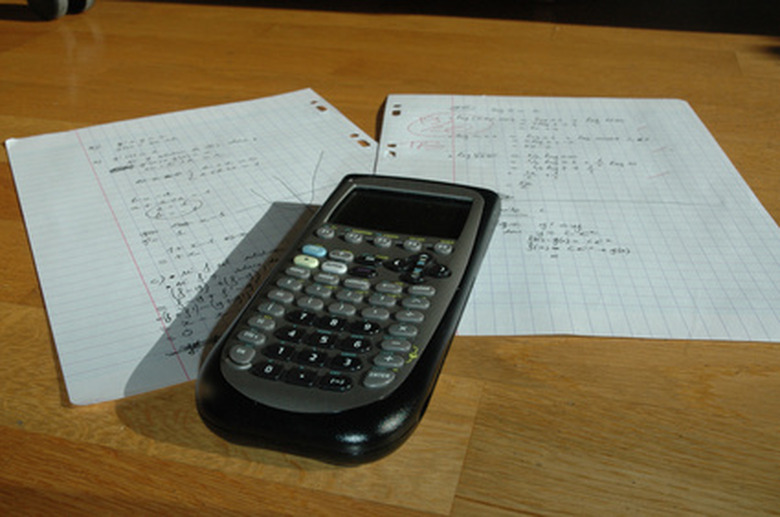How To Solve Cubic Polynomials
Polynomials are any finite expression involving variables, coefficients and constants related by addition, subtraction and multiplication. The variable is a symbol, usually denoted by "x," which varies according to what you want its value to be. Also, the exponent on the variable, which is always a "natural" number, determines the power/name of the polynomial. If the highest exponent on the variable is 2, we call the polynomial quadratic. If it is a 3, we call it cubic. Polynomials are solved when you set them equal to zero and determine what value the variable must be in order to satisfy the equation.
Step 1
Arrange your equation so that all variables and constants on the left are in descending order of exponent, set equal to zero and like-terms are combined. For example: Original: 2x³ + x – 3x² = 1 – 4x² + 3x All variables and constants move to the left: 2x³ – 3x² + 4x² + x – 3x – 1 = 0 Note: When terms move from one side of the equation–in this case the right side to the left–their signs turn opposite. Also, terms are now ordered by descending power/exponent; we simply have to combine like-terms. Final: 2x³ + x² – 2x – 1 = 0
Step 2
If you are bad at factoring, then skip to step 4. Otherwise, if you know how to factor, you can factor at this point. With cubic polynomials, you usually do group factoring. Observe: 2x³ + x² – 2x – 1 = 0 (2x³ + x²) + (-2x – 1) = 0 x² (2x + 1) – 1 (2x + 1) = 0 (2x + 1) (x² – 1) = 0 (2x + 1) (x -1) (x + 1) = 0
Step 3
Solve each factor: 2x + 1 = 0 becomes 2x = -1 which becomes x = -1/2 x – 1 = 0 becomes x = 1 X + 1 = 0 becomes x = -1 Solutions: x = ±1, -1/2 These values of x when plugged into the original equation make the equation true; that is why they are called solutions.
Step 4
Let the equation be in the form ax³ + bx² + cx + d = 0. Considering the coefficients of your equation–that is, the numbers in front of each variable–determine the values for a, b, c and d. If you have 2x³ + x² – 2x – 1 = 0, then a = 2, b = 1, c = -2 and d = -1.
Step 5
Use this website akiti.ca/Quad3Deg.html. Plug in the values of a, b, c and d obtained from step 4 and hit calculate.
Step 6
Interpret your answer correctly. Because of round-off error, where the computer cannot accurately compute enough decimals for square roots, the answers will not be perfect. Therefore, interpret 0.99999 for what it really is (the number 1). Using a = 2, b = 1, c = -2 and d = -1, the program returns x = -0.5, 0.99999998 and -1.000002 which translates to ±1 and -1/2. The exact cubic formula can be found at the websit math.vanderbilt.edu/~schectex/courses/cubic/ Because of its complexity, you should not attempt the formula yourself; it is better to master factoring or use a cubic solver.
Things Needed
- Calculator
- Paper
- Writing utensil
TL;DR (Too Long; Didn't Read)
You can also use synthetic division to break down polynomials to lower degrees. However, most basic cubic polynomials viewed in high school or college Algebra are factorable using the grouping method.
References
- "Algebra II (Cliffs Quick Review)"; Edward Kohn, David Herzog; 2001
Cite This Article
MLA
Smith, Sky. "How To Solve Cubic Polynomials" sciencing.com, https://www.sciencing.com/solve-cubic-polynomials-2409/. 24 April 2017.
APA
Smith, Sky. (2017, April 24). How To Solve Cubic Polynomials. sciencing.com. Retrieved from https://www.sciencing.com/solve-cubic-polynomials-2409/
Chicago
Smith, Sky. How To Solve Cubic Polynomials last modified March 24, 2022. https://www.sciencing.com/solve-cubic-polynomials-2409/
